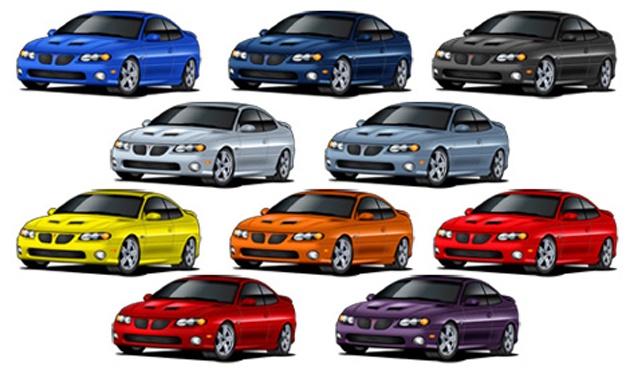What does your choice of car color say about you?
"A luxury sedan is more popular in black and white colors, but a small and sporty version is widely associated with red and colorful shades,"
says Nancy Lockhart, a color marketing manager with Axalta Coating Systems, a global car-coating business in Detroit.
Driving a white vehicle suggests that you prefer a young, modern approach to the outside world. Lora Shinn writes that environmental psychologist Sally Augustin "points out many contemporary brands—Apple, for example—are drawn to white for the same reason. It's the color of new
beginnings, starting over with a clean slate. White also is associated with honesty and purity.
Pittsburgh Plate Glass recently
released its annual automotive color popularity data, which reveals consumers again preferred cars with a neutral color. More than 75% of 2016 vehicles built globally were white, black, gray or silver, says PPG, a global supplier of paints, coatings, optical products, specialty materials, and fiber glass.
White remained the most popular global vehicle color at 38%, up from 35% last year. Black (16%), silver (12%), and gray (10%) rounded out the top automotive colors worldwide.
PPG research found that nearly 60% of U.S. and European consumers identified color as a major factor in their vehicle-buying decisions, but the popularity of blue, green, natural and red vehicles remained unchanged from last year.
WHITE DOMINATES GLOBAL COLOR TRENDS
Global color trends for main regions include:
- North America: White (25%) eclipsed black and silver (tied at 19%), gray (12%), and red and blue (tied at 10%).
- South America: White (37%) was close to the global popularity level, with silver (29%) a strong second. Black (12%), gray (10%) and red (8%) rounded out the top five.
- Europe: White (33%) was followed by gray (18%), black (16%), silver (10%), blue (8%), and natural and red (tied at 7%).
- Asia Pacific: White (47%) led by a larger margin than in any other region, while black (14%), natural (11%), silver (10%) and red (7%) trailed.
White dominates vehicle color globally, but there's more variety in color preferences by market and vehicle type, says Jane Harrington, PPG manager, color styling, automotive original equipment manufacturer (OEM) coatings.
“For example, in North America, silver is the leading color for compact vehicles, while black is preferred for sports cars," Harrington notes. "Metallic colors are popular with American and European men, while women from those markets prefer pearlescent effects on their cars."
She says understanding these differences "underscores the importance of working with our automotive customers to develop distinctive colors and effects that will appeal to a brand’s targeted buyer in a specific market."
Harrington says PPG is seeing an increase in blue for the model years 2017-2018. Blue suggests stability, truthfulness, and serenity, Augustin says. She observes that minivan moms often choose blue, which projects a nice, stable family appearance.
Blue increased by three percentage points in PPG's 2016 data, Harrington notes. "Blue increased by 3 percent on luxury, midsize and compact cars. Also, blue was very noticeable the last three years at the North American International Auto Show in Detroit."
She cites that in 2014 and 2015, concept vehicles and new models included the Porsche 911 Targa in Saphirblau, the Ford GT Super Car, Mustang, Fusion, and Focus in a striking layered blue. At this year's auto show, the Buick Avista concept vehicle captured the EyesOn Design award with its deep sapphire blue color scheme.
“Blue is a very versatile color for the automotive market, because subtle shifts in hue, chroma and flake appearance of a blue coating can do a lot to enhance a vehicle’s style or distinguish a brand,” Harrington adds.
What color are you?
To learn more about colors and other trends in the automotive coatings market, click
here.




